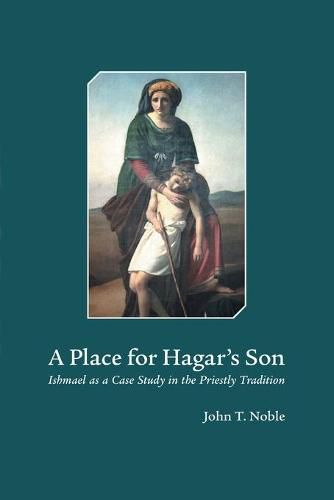Readings Newsletter
Become a Readings Member to make your shopping experience even easier.
Sign in or sign up for free!
You’re not far away from qualifying for FREE standard shipping within Australia
You’ve qualified for FREE standard shipping within Australia
The cart is loading…






The profound ambivalence of the biblical portrayals of Hagar and Ishmael-dispossessed, yet protected; abandoned, yet given promises that rival those of the covenant with Abraham-belies easy characterizations of the Pentateuch’s writers. In particular, John T. Noble argues, conventional characterizations of the Priestly writers’ view of covenant have failed to take into account the significance of these two non-chosen figures. NobIe carefully examines their roles and depictions in the P and non-P Genesis traditions, comparing them to other non-chosen figures and to patterns found in Exodus traditions and the patriarchal promises to Abraham, showing that Ishmael is clearly favoured, though not chosen. Indeed, Noble argues, Ishmael must be seen as a key figure in the Priestly material, highlighting the relationship between Noahic and Abrahamic covenants. His ambiguous status calls for reconsideration of the goals and values of the Priestly work, which Noble sketches around themes of covenant, fertility, life, and the future of nations.
$9.00 standard shipping within Australia
FREE standard shipping within Australia for orders over $100.00
Express & International shipping calculated at checkout
The profound ambivalence of the biblical portrayals of Hagar and Ishmael-dispossessed, yet protected; abandoned, yet given promises that rival those of the covenant with Abraham-belies easy characterizations of the Pentateuch’s writers. In particular, John T. Noble argues, conventional characterizations of the Priestly writers’ view of covenant have failed to take into account the significance of these two non-chosen figures. NobIe carefully examines their roles and depictions in the P and non-P Genesis traditions, comparing them to other non-chosen figures and to patterns found in Exodus traditions and the patriarchal promises to Abraham, showing that Ishmael is clearly favoured, though not chosen. Indeed, Noble argues, Ishmael must be seen as a key figure in the Priestly material, highlighting the relationship between Noahic and Abrahamic covenants. His ambiguous status calls for reconsideration of the goals and values of the Priestly work, which Noble sketches around themes of covenant, fertility, life, and the future of nations.